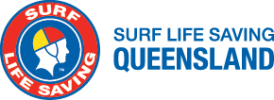PURPOSE
To outline the process and roles/responsibilities of lifesaving services and service providers in resolving radio network issues.
POLICY STATEMENT
A fully operational and effective radio network is essential to the provision of lifesaving services across the state. The resolution of radio problems must be undertaken in a coordinated manner to achieve the most time-efficient and effective outcome.
PROCEDURE
Radio Network Responsibilities
The following parts of the radio network are managed by the following parties:
a) Base sets, handheld radios – Clubs/Services/Lifeguards
b) Operation Support Handheld Radios, Vehicle Radios – SLSQ
c) SurfCom facilities/equipment – SLSQ
d) Radio Network Repeaters/VOIP – SLSQ
e) Radio Frequencies – SLSQ
f) Radio Network SOPs/Procedures – SLSQ
RADIO NETWORK MAINTENANCE PROCEDURE
1. A service identifies a problem with their radios.
2. Lifesaving service undertakes radio checks within its own area on at least 2 handhelds and or base set.
3. Lifesaving service undertakes radio checks with SurfCom.
4. Lifesaving service records the results of these radio checks and advises an authorised person. (Club Captain, Radio Officer, Lifeguard or Services Supervisor, Service Coordinator)
5. Authorized Person provides details to the State Operation Centre at socc@lifesaving.com.au or via the phone at 07 5631 7400.
6. State operation Centre adds to maintenance register and relays to contact as appropriate.
REFERENCE
Issues and Maintenance Form LINK



Post your comment on this topic.